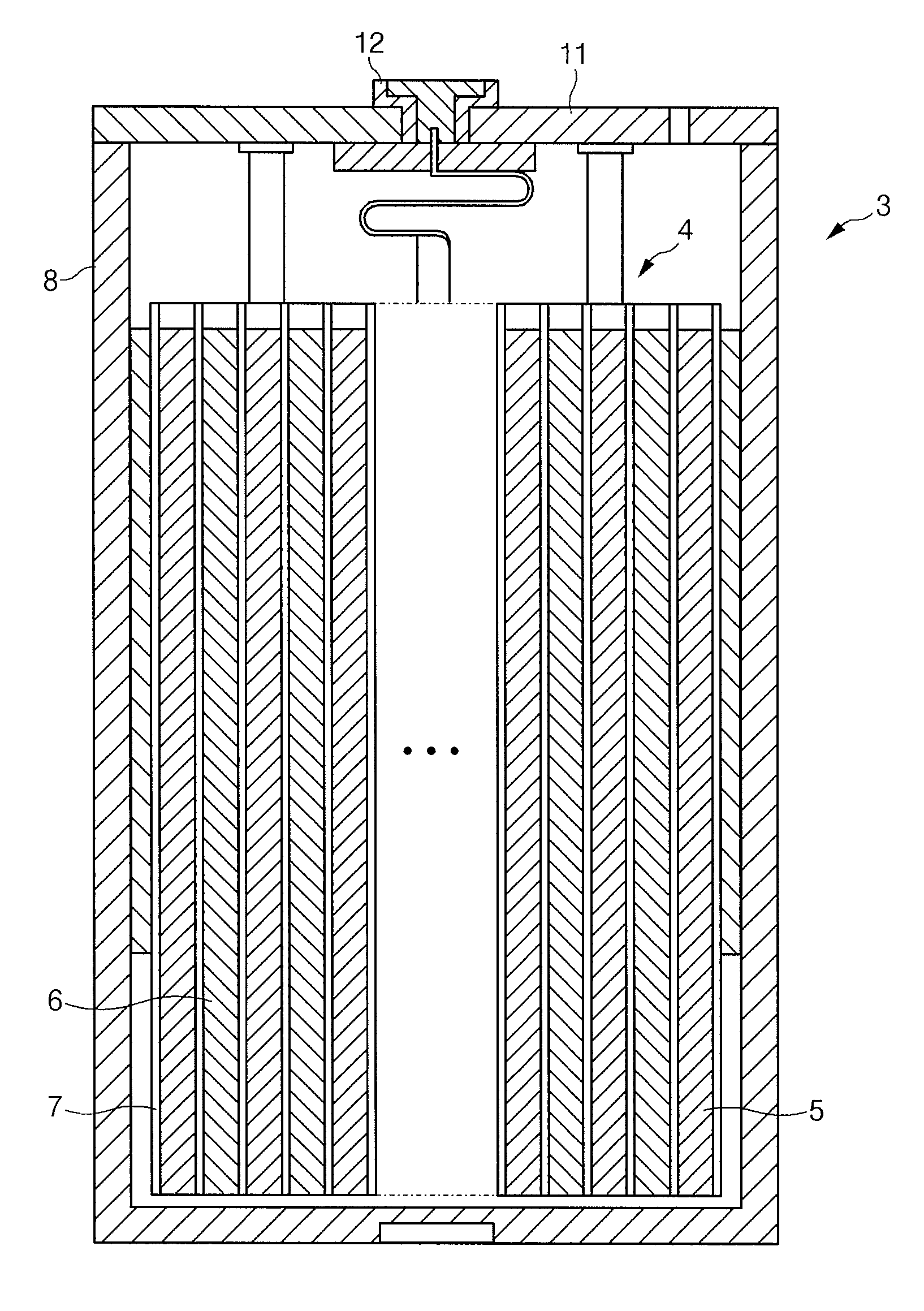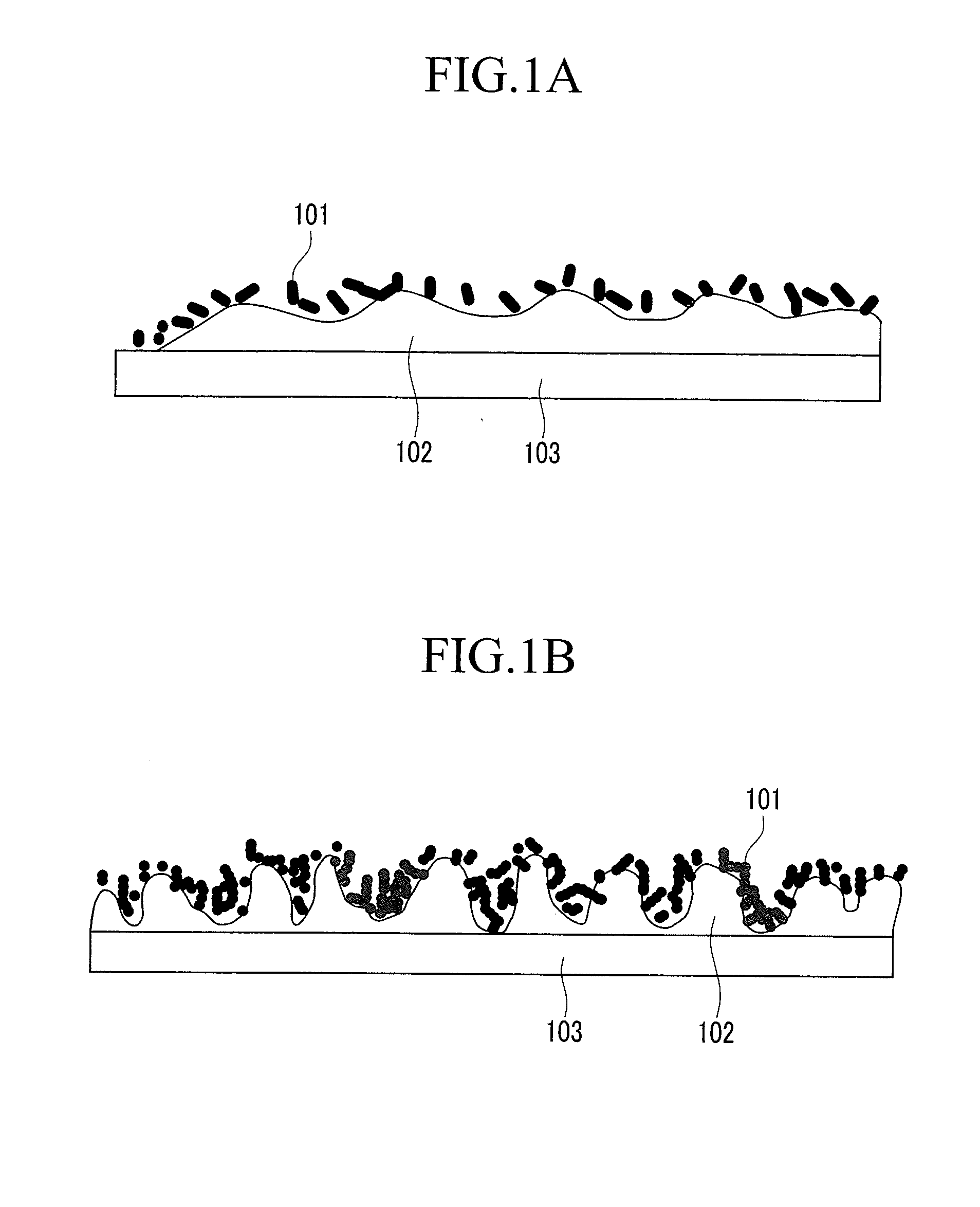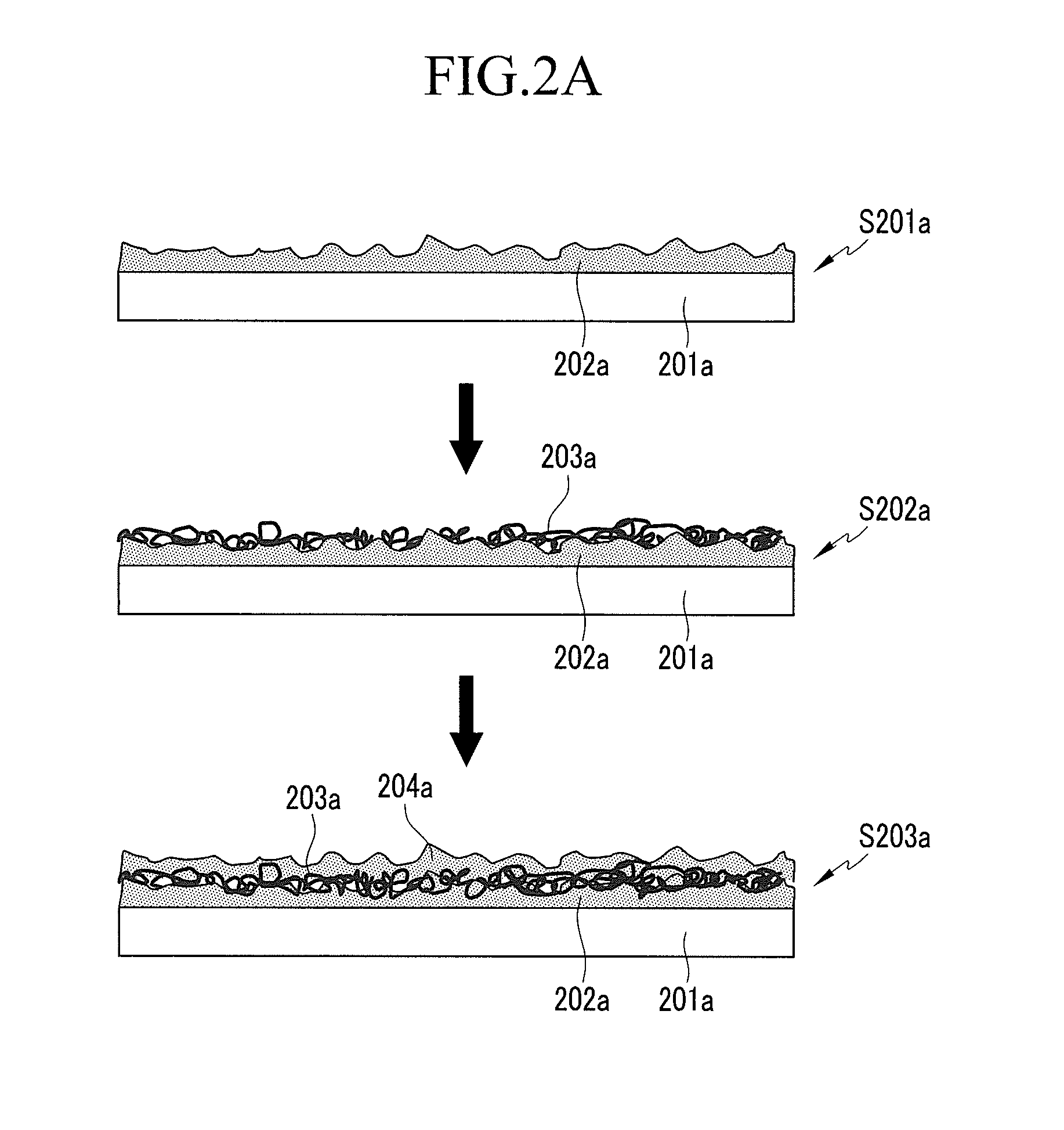Negative electrode for rechargeable lithium battery, method for manufacturing thereof, and rechargeable lithium battery comprising the same
a technology of lithium battery and negative electrode, which is applied in the direction of non-aqueous electrolyte accumulator electrode, cell components, coatings, etc., can solve the problems of not being used as the aforementioned negative electrode for future high-capacity lithium batteries, unable to achieve satisfactory charge and discharge performance of conventional negative active materials, and unable to achieve the same charge and discharge performance. , to achieve the effect of improving reliability, high charge and discharge capacity, and improving capacity retention characteristics
- Summary
- Abstract
- Description
- Claims
- Application Information
AI Technical Summary
Benefits of technology
Problems solved by technology
Method used
Image
Examples
example 1
Fabrication of Negative Electrode
[0101]1.0 g of carbon nanotube powder (Hanwha Nanotech Co.) was added to 1000 ml of isopropyl alcohol and then homogenized with a homogenizer for one hour. The resulting mixture was additionally dispersed using ultrasonic waves for one hour.
[0102]In addition, a 0.4 dm2-size Cu foil was treated in a 5 volume % H2SO4 aqueous solution to remove its surface oxide layer, and then purified by cleaning with an alkali aqueous solution to prepare a Cu current collector. An electrolytic bath was prepared by mixing 150 ml / L of Sn(CH3SO3)2, 157 ml / L of Cu(CH3SO3H)2, and 25 ml / L of CH3SO3H (Incheon Chemical Co.).
[0103]Then, a Sn electrode was used as a plating electrode, and a Cu foil was used as a plated electrode, and they were electroplated to dispose a 3 μm-thick plating layer including 90 wt % of Sn and 10 wt % of Cu on the Cu current collector, while the electrolyte solution was agitated at 50 rpm at room temperature (25° C.) at a current density of 15 Adm−...
example 2
Fabrication of Negative Electrode
[0104]A 0.4 dm2-size Cu foil was treated in a 5 volume % H2SO4 aqueous solution to remove a surface oxide layer and then purified by cleaning with an alkali aqueous solution, thereby preparing a Cu current collector. Next, a plating layer was disposed on the Cu current collector in the same aqueous electrolyte solution as Example 1 at a current density of 5 dm−2 for 10 seconds.
[0105]Then, the prepared carbon nanotube dispersion solution was deposited three times with no droplet agglomeration with a spray gun. Next, the plating was performed without heat treatment at a current density of 5 dm−2 for 10 seconds according to the same method as Example 1.
[0106]The carbon nanotube dispersion solution was deposited again on the plating layer under the same conditions as above. The resulting product was heat-treated according to the same method as Example 1. Accordingly, the active material had a multi-layered structure including a Sn (90 wt %) and Cu (10 wt...
example 3
Fabrication of a Cell
[0109]A 2016-type coin cell was fabricated using the negative electrode according to Example 1 and lithium metal as the positive electrode.
[0110]The electrodes were spiral-wound with a 20 μm-thick polyethylene separator and compressed together, and an electrolyte solution was injected thereto, thereby fabricating a coin cell. Herein, the electrolyte solution was prepared by dissolving LiPF6 to a concentration of 1.15M in a mixed solvent of ethylene carbonate (EC), ethylmethyl carbonate (EMC), and diethyl carbonate (DEC) in a EC:EMC:DEC volume ratio of 3:3:4.
PUM
 Login to View More
Login to View More Abstract
Description
Claims
Application Information
 Login to View More
Login to View More - R&D
- Intellectual Property
- Life Sciences
- Materials
- Tech Scout
- Unparalleled Data Quality
- Higher Quality Content
- 60% Fewer Hallucinations
Browse by: Latest US Patents, China's latest patents, Technical Efficacy Thesaurus, Application Domain, Technology Topic, Popular Technical Reports.
© 2025 PatSnap. All rights reserved.Legal|Privacy policy|Modern Slavery Act Transparency Statement|Sitemap|About US| Contact US: help@patsnap.com



